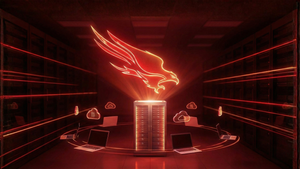3 Recession-Resistant Stocks: Low Beta, High Margins, Low Debt

When thinking about stocks with recession-resistant characteristics, a few key metrics come to mind. First are low-beta stocks. Beta measures how much a stock’s price moves compared to the overall market. A beta of 1 means that, on average, when the market went up 10% in a month, the stock also went up 10%. Conversely, if the market went down 10%, so did the stock.
The stock market tends to fall in a recession. So, stocks with betas significantly less than one are likely to fall less than the market, raising the chance of outperformance. A negative beta is even better; it indicates that when the market falls, that stock tends to rise.
Second is strong operating margins. They show that the company can absorb a large decrease in revenue, which often happens in a recession, and remain profitable. I look for operating margins of over 20%.
Third is a low debt-to-equity (D/E) ratio. It’s a sign that a company isn’t overly financing its operations using debt. If revenues fall in a recession, companies with too much debt might struggle to pay their loans and bonds. Debt repayment is mandatory, meaning it's not a cost the company can cut when things get tough. Lower debt gives businesses more financial flexibility and means a lower risk of bankruptcy in a downturn. A D/E ratio below 50% is what I’ll use as a measuring stick.
Below are three stocks that meet these criteria. I’ll also provide return figures for the stocks that traded during the 2008 recession.
International Seaways: A Negative Beta Stock With a Huge Dividend Yield
International Seaways (NYSE: INSW) operates a fleet of oil tanker vessels that transport crude oil and petroleum products across the world by sea. One reason the company can have strong recession-resistance is due to the global importance of oil. Although the demand for oil drops significantly in a recession, it tends to drop less than the demand for other goods. Oil is vital for transport, heating, and electricity. People can't live without these, even in a downturn.
International Seaways has a five-year monthly beta of about -0.1. This implies that if the market goes down 10%, the company’s shares tend to rise 1%. It also has a robust operating margin of around 50%. Its D/E ratio is 39%. It's high compared to the other two firms on this list, but it's not glaring.
When things are going well, the company often issues supplemental dividends on top of its regular payments. Over the last twelve months, it has provided a dividend yield of over 13%.
Regeneron: A Low Beta, Low Debt, High Margin Business
Regeneron Pharmaceuticals (NASDAQ: REGN) is a huge biotech firm worth $89 billion. It ranks as the 16th largest public company in the biotech and pharma industries. Just like oil, drugs that significantly improve people’s lives are another thing they tend not to want to skimp on in a recession. Also, many people have insurance that covers their medications, so it’s not an expense that makes much sense to cut back on.
The company also has an extremely low beta, coming in at just over 0.1. Its operating margin provides a significant cushion with the number at 30% over the last twelve months (LTM). Its D/E ratio is also very low at just 9%, giving the company substantial flexibility in its cost structure if it needs to use it. The company’s return in 2008 was -24%. Although it might not look like much, that was 14% better than the S&P 500.
RLI’s Specialty Insurance Niche Provides Resistance Against a Downturn
RLI Corp. (NYSE: RLI) operates in the specialty insurance market. The types of insurance it provides are often difficult for those who want them to find. Because of this, policyholders are less likely to cancel their policies in a recession than other types of insurance. This also allows the company to achieve higher margins, as customers are willing to pay more to get the insurance they need.
Its D/E ratio is exceedingly low at 7%. Its LTM operating margin of 25% isn’t as spectacular as that of the other two firms. However, it is still above 88% of all US stocks, according to Koyfin. The company did extremely well in 2008, providing a total return of nearly 10%. Its beta is significantly higher than the other two stocks but is still much below one at 0.4.
More News
View More




Recent Quotes
View More
Quotes delayed at least 20 minutes.
By accessing this page, you agree to the Privacy Policy and Terms Of Service.